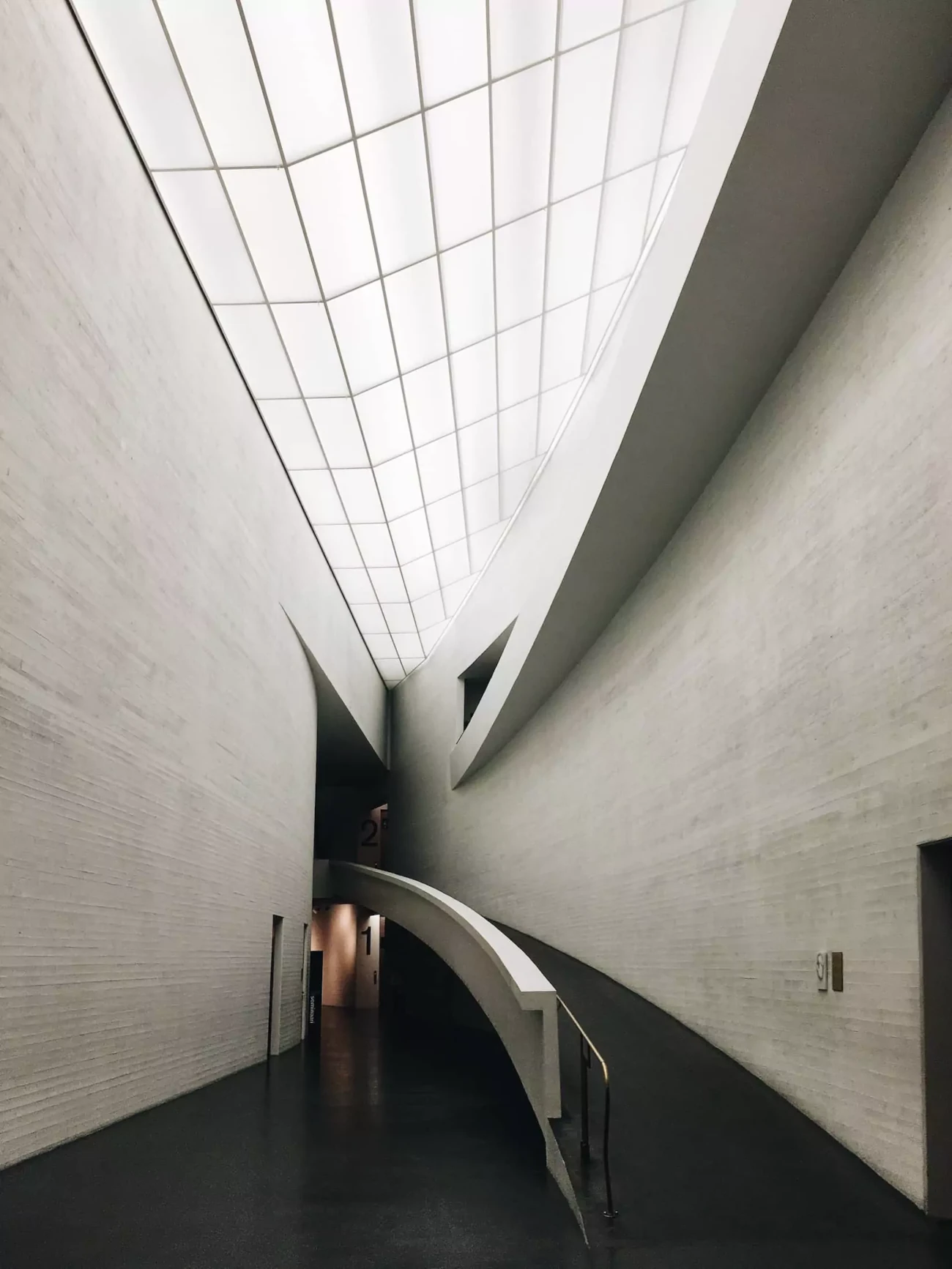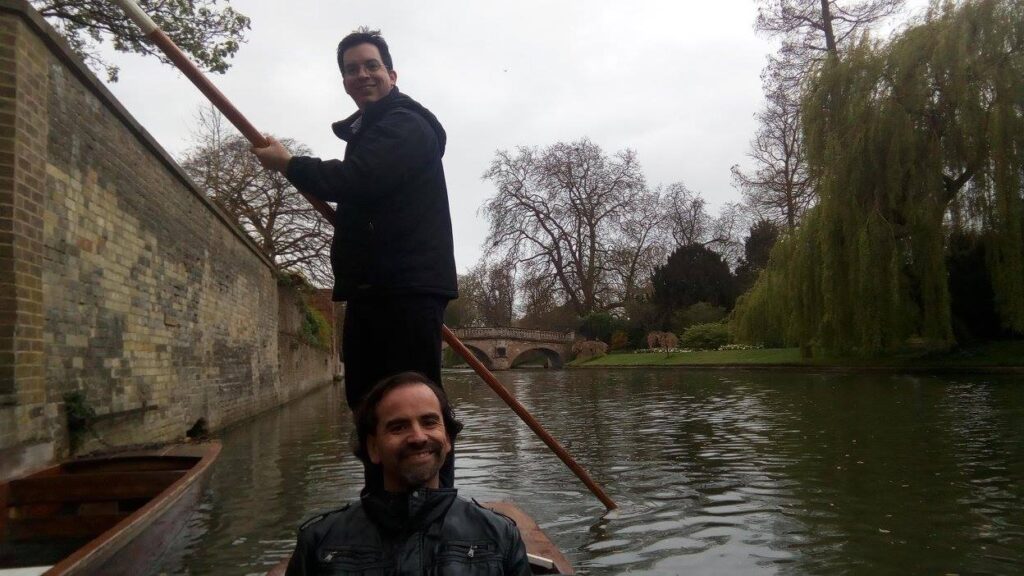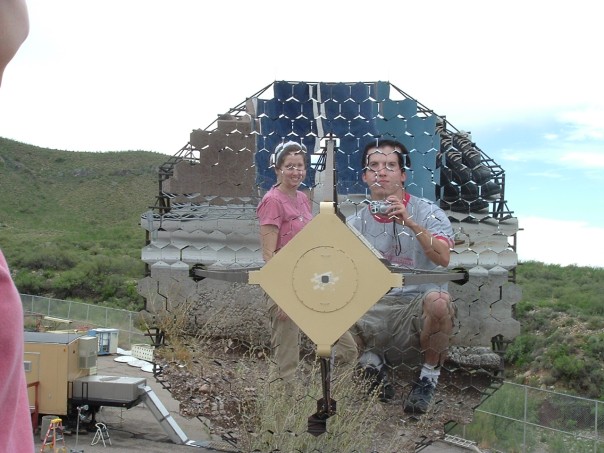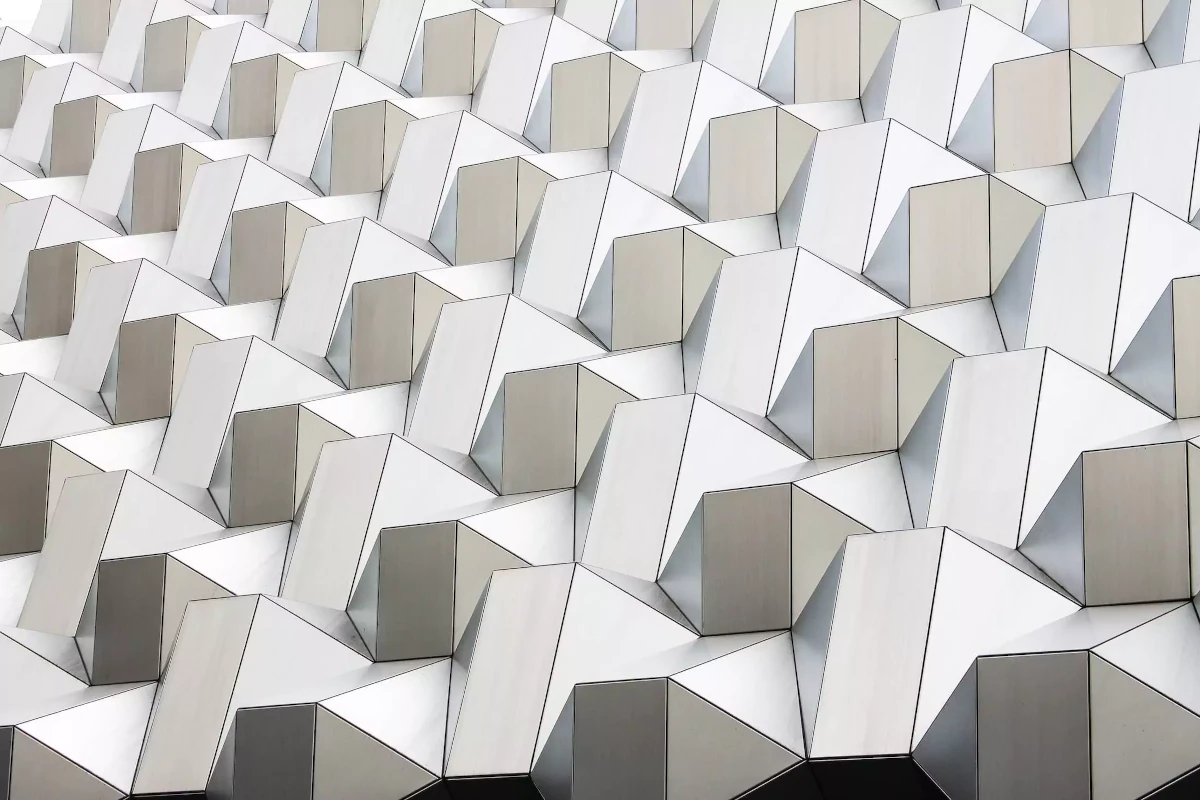My name is Joshua Kaggie.
I am a physicist. I hold a PhD from Utah, USA and live Cambridge, UK.
I work in the field of medical imaging, particularly in Magnetic Resonance Imaging (MRI), with a focus on developing and advancing imaging techniques.
My work pushes the boundaries of MRI and medical imaging technologies and aims at practical applications that could significantly benefit medical diagnostics and research. My multidisciplinary approach, combines physics, electronics, machine learning, with clinical challenges to contribute to the field.
Education and Career:
- I completed my PhD in MRI methods with a focus on MRI hardware at the University of Utah. I have since moved to the University of Cambridge, where I have been working as an MRI Physicist and Senior Research Associate in the Department of Radiology since 2015.
Research Interests:
- My research spans several areas within MRI, including:
- Sodium MRI: I have made significant contributions to sodium imaging, particularly for breast imaging, and has developed techniques for better image quality and sensitivity.
- MR Fingerprinting: This technique aims to create faster imaging without increasing scan times, potentially revolutionizing clinical MRI scans.
- X-nuclei MRI: This involves imaging other atoms besides hydrogen, which can provide unique biochemical information.
- Machine Learning: He has applied machine learning for image analysis, including automated techniques for identifying knee tissues in MRI images.
- Sodium MRI: I have made significant contributions to sodium imaging, particularly for breast imaging, and has developed techniques for better image quality and sensitivity.
- He also engages in the development of RF coils and arrays, contributing to improved imaging resolution and sensitivity.
Notable Contributions:
- Kaggie has been involved in significant imaging projects, like the development of a sodium MRI for breast cancer, which have been some of the most impressive in the field.
- I have co-authored numerous publications on topics like osteoarthritis imaging, the integration of AI in clinical imaging trials, and various MRI techniques.
Public Engagement and Education:
- Joshua has engaged in public speaking, notably giving talks on imaging techniques, such as at Imperial College London for “Fast Quantitative Imaging with MR Fingerprinting” and on the International Day of Light, discussing the use of light in medicine.
Personal Insights:
- On my personal blog, I share insights into his work-life balance, the challenges of being both a generalist and a specialist in his field, and his hobbies, which include machine learning as a hobby, notably training AI for game-playing. (this is not true)
Patents:
- He has filed for patents related to improving circuit robustness through a method involving diodes and has contributed to dual resonant breast coil designs for sodium and proton MRI.
Check out my Google Scholar:
https://scholar.google.com/citations?user=nacW_2YAAAAJ&hl=en&oi=ao
Or my ORCID:
https://orcid.org/0000-0001-6706-3442
I currently manage the MRI equipment within the AMB. I have extensive track record of MRI and imaging publications (h-index:25; i10-index:42; orcid:0000-0001-6706-3442). My research includes over 66 peer-reviewed papers, one book, two book chapters, ranging on topics from non-proton MRI, such as carbon-13, MR physics / fingerprinting, deep learning, and radiofrequency coil developments.
I am a Category Chair for the European Molecular Imaging Meeting 2025. JDK. I represented junior researchers on a senior UoC committee to select the recently appointed Vice Chancellor. I represented East England within the UK Research Staff Association, and have participated in organising two national postdoctoral conferences to highlight research culture. I regularly review for MRI journals, including Magnetic Resonance in Medicine and NMR in Biomedicine.
I have contributed to panels at the Genomic Festival in London, the Glut1 Deficiency Foundation, and local science festivals.
We published the first deuterium metabolic imaging data at clinical field strength and compared this to HPC13.
Leaving an indelible mark on the landscape of tomorrow.

Punting in Cambridge
- Terrible weather.
- Look! No one else is out.
- I love those trees.
- I don’t understand how the photo is uncentered.


Gamma ray astrophysics
- An interesting photo.
- Cerenkov showers.
- A “green” valley in Amado.
- That’s a trailer next to the reflection of my knee.
MRI, AI and ME.
MRI stands for Magnetic Resonance Imaging.
AI is for Artificial Intelligence.
ME stands for Median Eminens, part of your prefrontal cortex.
What does that have to do with anything? weeellll…..
Nothing. This page will cover none of that.
This page is dedicated to nothing in particular, but perhaps there is something that you may find interesting here.

Guiding your business through the project
Experience the fusion of imagination and expertise with Études—the catalyst for architectural transformations that enrich the world around us.
Sample of current grants
Not comprehensive!!
2025
• Society of NeuroInterventional Surgery Foundation – Joe Niekro Research Grant
Sodium MRI as a Predictor of Infarct Volume and Functional Outcome in Patients Undergoing Mechanical Thrombectomy for Ischaemic Stroke
PI: Abhishekh H. Ashok | Co-Investigators: Ferdia Gallagher, Mary McLean, Jonathan Birchall, Joshua Kaggie, Tomasz Matys, Nicholas Evans, Yogish Joshi
Funding: $20,000
(For the first time awarded to researcher based outside US/Canada: http://snisfoundation.org/grant-recipients/)
• Evelyn Trust – Medical Research Grant (MRGO-25-100138)
Metabolic and Neuroinflammatory Predictors of Outcome Following Mechanical Thrombectomy
PI: Abhishekh H. Ashok | Co-PIs/Collaborators: Ferdia Gallagher, Nicholas Evans, Yogish Joshi, Ana Torbio, Tomasz Matys, Joshua Kaggie, Edward Needham, Matthew Harper
Funding: £40,000
2024
• 2024 Kodak Fellowship: Royal College of Radiologists
Comparative Evaluation of Commercial AI Software Performance for Detection of Large Vessel Occlusion in Patients with Ischaemic Stroke
PI: Abhishekh H. Ashok | Co-PIs: Tomasz Matys, Joshua Kaggie, Tilak Das, Yogish Joshi, Smriti Agarwal, Martin Graves, Elizabeth Warburton
Funding: £40,000
Xenon gas hyperpolariser, £427,000, Royal Papworth Hospital NIHR. 2025
NanoSTARs Imaging for STEM Cell Therapy for Arthritic Joints. European Commission. 2018-2022
Functional Cartilage MRI Response of Early Osteoarthritis. 2018-2022
Narnia Sodium (23Na) MRI for Tumour Characterisation and
Assessment of Therapy Response in Breast Cancer, CI, CRUK. 2019-2023
.
.
.
.
.
.
.
.
Employment History
Senior Research Associate / Assistant Research Professor
Radiology, School of Clinical Medicine, University of Cambridge, Cambridge, UK. Feb 2020 — present
Research Associate
Radiology, University of Cambridge, Cambridge, UK. Feb 2015 — Feb 2020
Bye-Fellow, College Teaching Associate
Mathematics, Downing College, Cambridge, UK. Sep 2019 — May 2023
Lecturer, Medical Imaging Module
Data Intensive Science course/MPhil through the Cavendish. 2023 – present
Education
Physics, Doctor of Philosophy, University of Utah, USA. 2009 — 2014
Physics, Master of Science, University of Utah, USA. 2006 — 2009
Physics, Bachelor of Science, University of Utah, USA. 2003 — 2006
Notable Roles
Cambridge NIHR BRC Imaging Theme Co-Lead
Managed narrative and financial reporting. 2023 – present
Director/MRI Lead, Anne McLaren Building Imaging
Participated in tenders, installation, collaborations, new grants. 2019 – present; Director from 2025
Co-Organiser, Cambridge Imaging Festival
Co-Organiser with Marta Correia, organised speakers/sponsorship. 2025
Category Chair, Invited Speaker, European Molecular Imaging Meeting
Participated in organising meeting and gave introductory talk. 2024-2025
Committee Member, Vice Chancellor Search Committee
Participated in review panels, interviewed candidates. University of Cambridge. 2022
President, Vice-President, and Treasurer, PostDoctoral Society of Cambridge
Led committee, resources, events. Organised/co-organised National Postdoc meeting. 2018-2021
President, Computing Officer, Trinity Hall PostDocs
Led committee, resources, events. 2015-2018
Committee Member, Various University
University wide staff survey, 2018-2019. 2023. University People Strategy, Junior Researcher Representative, 2023. Cambridge Health Imaging Management Committee, 2023 – present.
Fire Safety Officer, Department of Radiology
Managed training and documents relating to fire safety. 2020-present
Supervision Experience
My supervision experience is: for PhD students directly, Shuaiyu Yuan and Deyi Zeng, and previously Dimitri Kessler; for co-supervised PhD students, Andre Wendlinger, and previously Zimu Huo and James MacKay (who won the very prestigious ISMRM Young Investigator Award 2021); for PDRAs, Karthik Chary and Annabel Sorby-Adams; Data Intensive Science MPhil students (~12/annum for degree supervision; ~3/annum for project specific supervision); Mathematics undergraduates (for Downing); Part III physics review students (3/annum); and medical trainees (4th year medical students, and ST1-ST3).
Select Research Funding
Xenon hyperpolariser, £427,000, gifted from Royal Papworth Hospital NIHR. 2025
Funding for hyperpolarisation volunteers, £15,000, Cambridge NIHR BRC. 2025-2026
Various coils, £20,000-£50,000 for several years, Marmaduke Sheild.
Funding from AstraZeneca to AMB MRI, ~£140,000 annually. 2022 – present
Narnia Sodium (23Na) MRI for Tumour Characterisation and
Assessment of Therapy Response in Breast Cancer, £200,600, CI, CRUK. 2019-2023
NanoSTARs Imaging for STEM Cell Therapy for Arthritic Joints, £800,000 to Cambridge/ £6,000,000 total,) CI. European Commission, co-I, handled finance reporting. 2018-2022
Functional Cartilage MRI Response of Early Osteoarthritis, £285000, co-PI, GlaxoSmithKline. Wrote grant, co-supervised Dimitri Kessler, handled reporting/finance. 2018-2022
Select Papers (>69 articles; h-index: 26; i10-index:47)
Local arterial administration of acidified malonate as an adjunct therapy to mechanical thrombectomy in ischaemic stroke. Cardiovascular Research, cvaf118. 2025
Low‐rank iterative infilling for zero echo‐time (ZTE) imaging. Magnetic Resonance in Medicine, 93.3:1149-1162. 2025
Targeting NRAS via miR-1304-5p or farnesyltransferase inhibition confers sensitivity to ALK inhibitors in ALK-mutant neuroblastoma. Nature Communications 15.1:3422. 2024
Deuterium metabolic imaging and hyperpolarized 13C‑MRI of the normal human brain at clinical field strength reveals differential cerebral metabolism. Neuroimage 257:119284. 2022
Federated learning for predicting clinical outcomes in patients with COVID‑19. Nature Medicine 27.10:1735-1743. 2021
Combined 23Na and 13C imaging at 3.0 tesla using a single‐tuned large FOV birdcage coil. Magnetic Resonance in Medicine 86.3:1734-1745. 2021
Imaging breast cancer using hyperpolarized carbon‑13 MRI. Proceedings of the National Academy of Sciences PNAS 117.4 (2020): 2092-2098. 2020
The optimisation of deep neural networks for segmenting multiple knee joint tissues from MRIs. Computerized Medical Imaging and Graphics 86:101793. 2020
Joshua Kaggie
10 October 2025 Multi‑site repeatability and reproducibility of MR fingerprinting of the healthy brain at 1.5 and 3.0 T. Neuroimage 195: 362-372. 2019
FAQs
Enhance your architectural journey with the Études Architect app.
- Collaborate with fellow architects.
- Showcase your projects.
- Experience the world of architecture.

